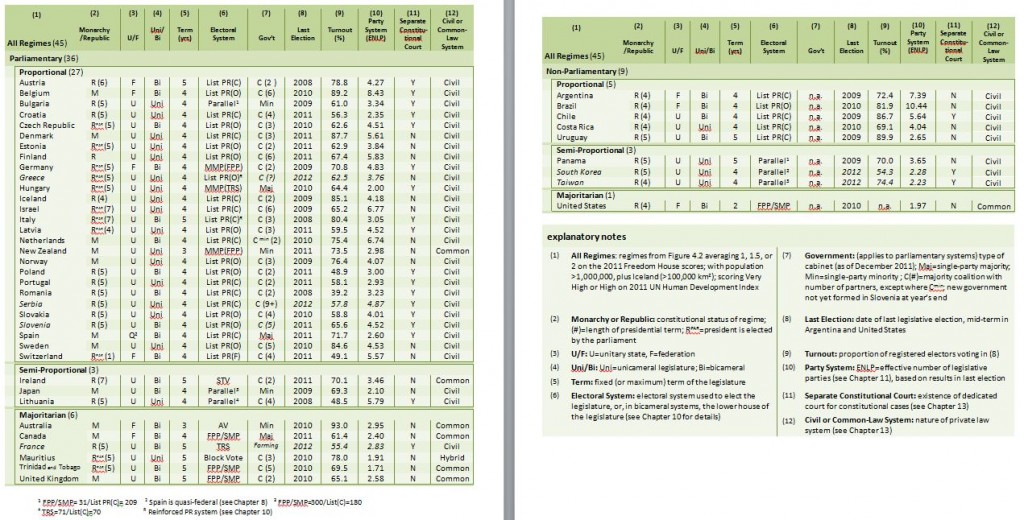Chapter 5: Roadmap to the Rest (a Comparative Framework)
Chapter Summary Self-Study Questions Key Terms Resources
CHAPTER SUMMARY
This is less a chapter than an overview of the remainder of the book, a comparative introduction to the political system in developed world liberal democracies. Any system is a whole, which means that it is impossible to understand fully any one of its parts without reference to the others. Nonetheless, one must start somewhere. This text has divided its discussion of the political system into three parts, in the following order:
(a) the institutions of the state
(b) the political processes by which citizens deliver information, support, dissent, and their representatives to the state
(c) the processes of policy-making and public administration by which the state addresses problems and other stimuli that originate or have their ultimate solution in civil society
This is not the only order in which the material covered in the remainder of the text may be approached. Some instructors or readers may prefer to begin with the political process(es), discussing elections, political parties, or, alternatively, the issues that are dealt with in the policy-making process. Chapter 5 provides a brief look at some of the distinctions and connections that characterize the variations most common within the political systems of contemporary liberal democracies in order to prepare readers for what follows no matter in what order the final three sections of the book are covered. The Appendix to this chapter provides a data set of the 45 liberal democracies compared in the subsequent chapters, organized and presented on the basis of 12 categories. The values presented in the text represented the situation in these regimes as of December 31, 2011. That Appendix is reproduced here, where it will be updated periodically to reflect changing political and economic situations.
SELF-STUDY QUESTIONS
Multiple Choice
(Answer key below)
1. Which of the following constitutes an input into the political system?
a. The political process
b. Public policy
c. Public administration
d. None of the above
2. Which of the following describes the pattern of organization that characterizes a state?
a. Mode of government
b. Institutional array
c. System
d. None of the above
3. Traditional constitutions are characteristic of which of the following?
a. Britain
b. Canada
c. New Zealand
d. All of the above
4. Which of the following is a unitary state?
a. Canada
b. The United States
c. England
d. All of the above
5. A two-party system with weak parties can lead to which of the following?
a. Anarchy
b. Bipartisan brokerage
c. Non-partisan politics
d. None of the above
[qa cat=”ch5mcak”]
Short Answer
(Click question to reveal answer)
[qa cat=”ch5ssq”]
KEY TERMS
(Click term to reveal definition)
[qa cat=”ch5kt”]
RESOURCES
Further Readings
Böckenförde, Markus, Nora Hedling, and Winluck Wahiu, eds. A Practical Guide to Constitution Building. Stockholm: International Institute for Democracy and Electoral Assistance (International IDEA), 2011. Electronic copies: Complete Book and By Chapter
Gandi, Jennifer. Political Institutions under Dictatorship. Cambridge: Cambridge University Press, 2008. Get Abstract
Heffernan, Richard. “Why the Prime Minister cannot be a President: Comparing Institutional Imperatives in Britain and America.” Parliamentary Affairs. 58.1 (January 2005): 53-70. Get Abstract
Lundell, Krister. “Accountability and Patterns of Alternation in Pluralitarian, Majoritarian and Consensus Democracies.” Government and Opposition. 46.2 (April 2011): 145–167. Get Abstract
Marquand, David. “The Once and Future Constitution.” Government and Opposition. 46.2 (April 2011): 274–292. Get Abstract
Other Resources
Listen to Richard Heffernan’s “The Funny Thing About Politicians,” where he discusses civil servants, spin doctors, and politics, using clips from “Yes, Minister” and “The Thick of It,” in the podcast from the Open University (UK)
Appendix: Data Set (revised entries appear in italics)


